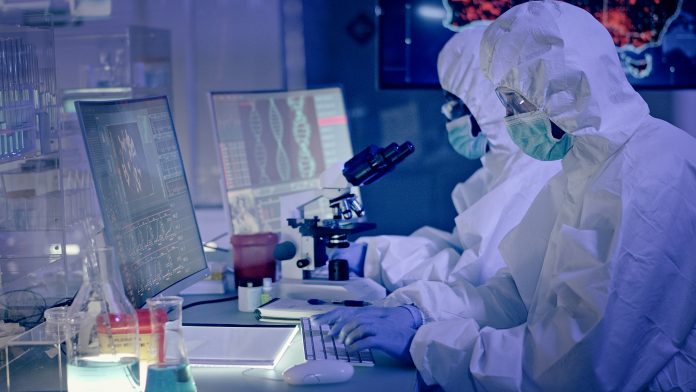Zisis Kozlakidis and Caboux Elodie from the International Agency for Research on Cancer discuss how the COVID-19 pandemic accelerated the adoption of changes in public health interventions and patient care
The effects of the coronavirus (COVID-19) pandemic were evident across every single aspect of healthcare, from hospital services to public health decisions and surveillance capacities to the research and development of vaccines. As such, the pandemic transformed into a reality check for many aspects of healthcare systems, especially regarding their overall readiness and ability to adapt to change and absorb and manage sudden and persistent pressures on their workload, especially in patient care settings.
Even though contingency plans were often in place, healthcare systems seemed unable at certain times to cope with the sudden, intense surge in demand. While much of the published literature has focused on the challenges faced during the pandemic, this article highlights the examples that led to effective change and adaptation to those challenges.
Local actors and lasting innovations in oncology
In France, a decision was made during the pandemic at the national level to prioritize continued treatment for cancer. In addition, some private non-profit cancer centres – as well as some specialized services such as paediatric oncology – did not manage COVID patients and could, therefore, function relatively as normal, even during the first wave, albeit with human resource and protective material shortages.
At the same time as the introduction and implementation of guidelines, the role of local actors – those working at the individual service or hospital level – and the adaptations and innovations they put in place also played an important part in helping healthcare institutions continue to care for their patients. For example, one such sustainable innovation to come out of the crisis was the creation and/or consolidation of inter-disciplinary, online epistemic communities, which can be defined as networks of knowledge-based experts that enabled professionals to continue to seek advice from colleagues.
Another one was that the crisis helped test the possibilities and limits of telehealth services and has had lasting effects on how patient care is organized to the present day.
Genomic sequencing for pandemic prediction
The speed by which SARS-CoV-2 spread globally highlighted the need for robust genomic sequencing, as well as reliable and representative surveillance systems, to support pandemic prediction. An operational model emerged (or was further strengthened in many cases) with large centralized clinical laboratories performing high-throughput sequencing on one central platform and one or several distal laboratories dealing locally only with urgent analyses.
This led to a harmonization in the quality of genomic sequencing produced while maintaining high-throughput capacities. One of the innovations was the routine use of big data and artificial intelligence approaches to model the pandemic development and to identify and understand the weaknesses of existing systems (close to real-time). Furthermore, the experiences and innovations on digital health were quickly consolidated within a global framework of public health priorities, as articulated in the G20 Riyadh declaration in 2020.
Changes in public health: Laboratory capacities scale up
One of the greatest challenges facing healthcare systems was the need to leverage the laboratories’ capacity in diagnostic testing and to increase the number of people being tested quickly. Several countries, for example, South Korea and Saudi Arabia, were able to conduct successful COVID-19 countermeasures through adequate laboratory diagnostic testing provision.
South Korea is an example of a country that rapidly adapted its COVID-19 testing response, maintaining around 600 screening and testing centres through close collaboration with the private sector, with its testing capacity reaching 110,000 tests as early as November 2020. The laboratory scale-up was successfully achieved in middle-income countries such as Indonesia. In the latter case, the COVID-19 referral laboratory network grew rapidly from a single Ministry of Health NIHRD laboratory in the capital of Jakarta to 685 laboratories across 34 provinces within 12 months since the first Indonesian case was discovered.
This rapid scale-up was the result of successful, cross-sectoral collaboration among previously siloed national and sub-national government institutions, international development agencies, and private sector stakeholders- all brought under one digital umbrella for the functions relating to COVID-19. (4) It is anticipated that this innovative approach within Indonesia will now be expanded and used in other sectors, e.g., the infectious disease surveillance networks.
The COVID-19 outbreak serves as a transformation catalyst for global health, accelerating the implementation and adoption of changes in public health interventions and patient care. It also serves as a reminder that proactive planning for healthcare emergencies and an intensified commitment to global public health preparedness remains necessary. It is hoped that the positive lessons learned, as highlighted in this article, will continue to be considered, enabling the transformation of future healthcare.
References
- Bogaert, B, et al. “What went right during the COVID crisis: the capabilities of local actors and lasting innovations in oncology care and research” PLOS Global Public Health (2023).
- Al Knawy, B, et al. “The Riyadh Declaration: the role of digital health in fighting pandemics.” The Lancet 396.10262 (2020): 1537-1539.
- Kozlakidis, Z, et al. “Global health and data-driven policies for emergency responses to infectious disease outbreaks.” The Lancet Global Health 8.11 (2020): e1361-e1363.
- Aisyah, Dewi N., et al. “Laboratory readiness and response.
Disclaimer
Where authors are identified as personnel of the International Agency for Research on Cancer/WHO, the authors alone are responsible for the views expressed in this article, and they do not necessarily represent the decisions, policies or views of the International Agency for Research on Cancer/WHO.
Funding
This work was supported in part by Métropole de Lyon – Cancéropôle Lyon Auvergne-Rhône-Alpes (CLARA) – Soutien aux projets structurants 2020; LYRICAN (INCA-DGOS-INSERM 12563) and Biobanking and Population Cohort Network (BCNet; CRDF Global, Award No. 66415).
Contributor Details
Editor's Recommended Articles
-
Must Read >> £1.1 million given for Long Covid research














